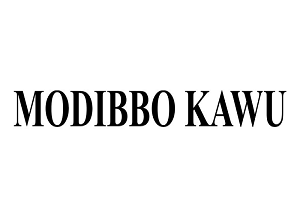CURRENT AFFAIRS UNIT, RADIO KWARA, ILORIN
PROGRAMME: NEWS COMMENTARY
DATE OF BROADCAST: 5/1/89 AT 1810 HOURS
WRITER: LANRE KAWU
When George Bush is inaugurated, tomorrow, as the 41st President of the United States of America, he will be opening a new chapter in recent history, and closing a very controversial one. During the two 4-year terms as American President, Ronald Reagan, with determination, took steps to change the American society, constructed in the wake of the powerful tides of the 2nd World War, while abroad, he made the attempt to fashion out a new order, which has as its central concern, the hegemony of American Imperialism, in international relationships.
The period leading to Reagan’s presidency had been characterised by major setbacks for the U.S. at both the domestic and international levels. These setbacks were painted in the most gloomy terms, in order to make the American people accept readily, the various manifestations of what came to be known in political and economic circles, as Reaganism. Between 1969 and 1979, the American economy showed classical trends of stagnation. The value of the dollar fell from Four Deutshe Marks to less than two. The older industries, such as steel works and textile factories, were gradually losing business to Asian competitors.
Unemployment was very high and the general trend of economic activity was as sluggish as it was decaying. These problems were compounded by inflation, which was the monster that came out of the crisis of the 1970s. For the conservative intelligentsia organise in the Chicago School of Economic Sciences, led by Milton Friedman, the American economy, was ample proof of the historically moribund nature of the Keynesian Doctrine that has been in place, since the 2nd World War.
They advocated a regime of cuts in social spending, the removal of inflation, greater discipline and reliance on the forces of the market. This is in consonance with their neo-classical theoretical perspective. It was this perspective, that was at the base of the domestic policies of President Reagan. In the Reagan years in America, the rich became richer, and the poor, of course, the poor became poorer. This means, in essence, vulnerable groups like Blacks, the Chicanos, the homeless, children were denied educational and social support.
In the field of international affairs, America had suffered the disgraceful defeat in Vietnam. That left a deep psychological scar on the ruling circles of this mighty imperialist nation. In the same vein, the preceding decade of the 1970s saw the victory of national liberation struggles in Africa, the Iranian and Nicaraguan Revolutions. All these triumphs at the expense of quislings that had been doing the biddings of the U.S.A.
Ronald Reagan went round the world from the Caribbean, Latin America, Southern Africa, the Middle East and South East Asia, like a gladiator, spreading imperialist, modern-day gunboat intimidation at best, and at worst, naked aggression and state terrorism. In Southern Africa, his “Constructive Engagement Policy”, meant an almost ten years delay in the implementation of the United Nations plan for Namibian independence, and more suffering, dislocations and deaths in Angola. This under the UNITA bandits that Reagan supplied with arms and called “Freedom Fighters”.
The Reagan Presidency finally put the seal on the United States as the world’s biggest debtor nation. His regime ran a deficit of up to $150 billion by 1987 alone. In the meantime, Reagan fostered his ambitious “STAR WARS” plan, which was designed to turn the cosmos into an arena for a new form of confrontation. Similarly, defence spending reached the huge proportions of more than $400 billion by 1988. Ronald Reagan, who also believes in the possibility of a winnable, limited nuclear warfare, strengthened the killer institutions of the IMF and the World Bank, with their poisonous pills of Structural Adjustment, that is sowing destruction in the Third World.
History is full of paradoxes. In the Reagan years, the steps to plant the seeds of peace, in the various regional conflicts, bear us out in this regard. But there is no denying that this is largely due to the initiatives of the Soviet Leader, Mikhail Gorbachev. When all is said and done, therefore, the Reagan years will go down as some of the most turbulent, of contemporary history.


